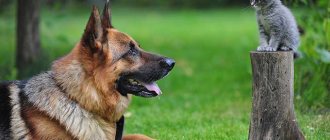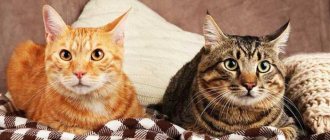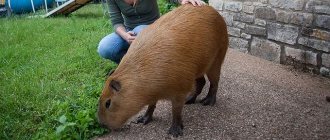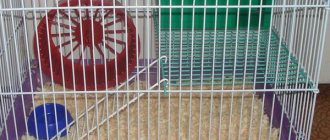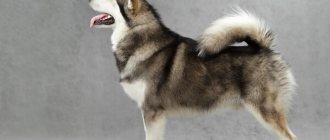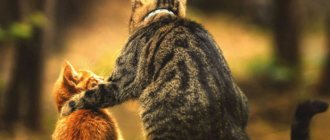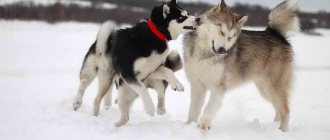- home
- General information
11/01/2018 Distinguishing dzhungarik from Campbell is not an easy task. These two popular varieties of dwarf hamsters are similar in appearance, which is why they are confused by inexperienced sellers in pet stores, misleading buyers. When purchasing a hamster, it is extremely important to know its breed correctly. This is directly related to the character of the pet, the characteristics of taming and caring for it, its health and proper nutrition. Despite all their similarities, the Dzhungarik and the Campbell have characteristic features that will help to recognize that the animal belongs to a specific breed.
Character
Kind and affectionate hamsters
Representatives of the breeds are radically different in character. The Dzungarian small rodent is restive and aggressive. He often bites people who try to pick him up, but with proper training he becomes gentle and affectionate. The main thing is to surround him with love and care. Pets should be tamed gradually
It is important to explain to children that a pet is not a toy.
As for his dwarf relative, he rarely shows aggression towards adults and children, so you won’t have to spend a lot of time taming him. With a little care and patience, the owner will receive an affectionate pet that can easily fall asleep in his arms.
At the same time, we must not forget that each rodent has its own character, so within the same breed there are both aggressive and affectionate animals. The character of a dwarf rodent can be partially determined by its behavior in the pet store.
Feeding and diet
The basis of this animal's daily diet is cereals. You can buy ready-made food in pet stores. You can make the mixture at home by mixing equal parts of peas, corn, wheat, nuts, sunflower and pumpkin seeds.
You can feed your hamster any fruits, vegetables and nuts.
Prohibited:
- citrus;
- persimmon;
- garlic;
- onion;
- potato;
- zucchini;
- almond;
- peanut;
- fruit seeds and pits.
You can add parsley, dill, clover, and lettuce to your diet.
Dried fruits and biscuits can serve as treats.
The diet should be enriched with greens - parsley, dill, clover
In order to diversify your pet’s diet, make it more complete and balanced, it is recommended to give your hamster:
- bread;
- cottage cheese;
- unsalted wheat, semolina or oatmeal porridge;
- boiled meat.
Campbell's hamsters turn over their food bowl, so you need to make sure there is always fresh food in it.
But you shouldn’t give too much food, excess weight will negatively affect your health.
The water needs to be changed every 1-2 days. At the same time, the drinking bowl can only be washed using soda, without detergents.
How to distinguish a Djungarian hamster from a Campbell's hamster
Both species belong to the genus Hairy Hamsters. Animals can mate with each other, so hybrids are very common in pet stores. They are small in size, they can be from 7 to 10 cm in length. An adult rodent will weigh no more than 60-70 g. Both breeds are nocturnal.
Since both the Djungarian and Campbell's hamsters are small in size, they can be kept in small cages, aquariums or plastic terrariums. They should be kept separately. The bedding must be shavings or sawdust. Most of their menu consists of cereal mixtures, pumpkin seeds and dried corn on the cob.
Therefore, before buying a hamster, you need to study the information about the breed you are interested in in order to purchase it. After all, each type of animal has different needs for care and maintenance.
Color
When purchasing a pet hamster, you first need to pay attention to its coat color. Thanks to this, you can determine its breed
Dzhungarik coat color:
The predominant colors are dark shades of brown, as well as gray and black. In most cases, this breed has a diamond pattern on its head. It can blend in with the main color of the animal or be clearly outlined. For example, if the animal is brown in color, then the diamond will be drawn most clearly. In gray animals it is difficult to notice
It all depends on the main color of the animal. You need to pay attention to the sides of your pet. This breed has well-defined arches between its back and belly. You also need to look at the stripe that is on the back
In the Djungarian breed it has clear boundaries, and in the area of the withers it expands.
Campbell's hamster color:
- Sand and amber shades predominate. There are also black representatives. The color may contain light shades of brown.
- There are also arches on the sides, but they are practically invisible, as they merge with the main color of the coat.
- The dorsal stripe of this breed is much thinner, and in the lower part of the body it can hardly be seen.
- There is a spot on the coat.
- These rodents have a richer variety of colors. Among the representatives of the breed there are albinos, rodents with agouti, argenta, gray and spotted colors.
Coat type
The appearance of the coat, which varies among breeds, is also very important. The Djungarian hamster's coat is much denser, very smooth and even.
Campbell's hamster gets it in tatters. Somewhat reminiscent of sheep's wool. When the animal moves, it is divided into stripes.
Body type
Both breeds have almost the same dimensions. Their body length does not exceed 10 cm. Therefore, these breeds are called dwarf.
If you take a good look at their physique, you can see that there are still some differences. Campbell's rodent has a waist. If you look at the animal from above, then its body shape is similar to the number “8”.
The Dzungarian breed does not have a waist. His physique is more rounded. If you look at it from above, its shape can be compared to an egg.
Main differences
Despite many similar features, the main differences are highlighted:
Wool
The Djungarian hamster has dense fur, it is quite smooth and shiny. Campbells have a wavy coat and appear a little shaggy in appearance.
Color
Campbell's main shades:
- orange (mandarin)
- pearl
- sapphire.
Often, hamsters are red in color, have a uniform color, and have a dark stripe on the back.
A rare shade found in this species is agouti; even more rare are albino, argent, opal, gray, blue, spotted. The fur is somewhat disheveled.
Djungarians can come in a wide variety of colors, but their distinctive feature is stripes on the sides, on the back and a diamond on the face. The coat lies tightly and smooth.
Another important point is that in the cold season, Campbells have a change in coat color, and the Djungarian hamster may have a change in the stripe on its back, completely matching the main shade.
Anatomical differences
Dzungariks have an oval carcass that looks like an oval. Campbells externally repeat the outline of the number 8, due to the presence of a waist. The Djungarian rodent never has red eyes, while others do, but quite rarely. The Djungarian hamster has larger ears than the Campbell's.
Behavior
Many people like Djungarian hamsters and often get them: thanks to their friendliness, they are easily tamed and easy to get along with.
Campbell's rodent, on the contrary, is aggressive, and it is almost impossible to tame it. Both breeds are quite active animals; they love to run in a wheel, bury themselves in sawdust and create order in the bowl, creating noise.
Interesting facts about golden hamsters
Animals of this breed living in captivity are very friendly and not at all aggressive. This is what distinguishes them from their wild counterparts. But at the same time, they skillfully guard their territory and will not allow strangers to be on it. For them there is no concept of family ties. These animals prefer to live alone and are capable of killing a weaker hamster. Therefore, owners should keep them alone.
Scientists have proven that Syrian hamsters can eat almost anything. Therefore, in addition to seeds and grains or fruits, they also need to eat animal protein. In the wild, they can eat insects, carrion, or even hunt other small animals. In addition, sometimes females can destroy their offspring, which their owners try to prevent in captivity.
At home, these animals should be given lean and thoroughly cooked poultry or fish. Otherwise, these small and usually calm animals become quite aggressive and can bite.
Djungarian hamsters
The Djungarian hamster is another famous domestic representative of the hamster family. It is characterized by a height of up to 10 centimeters and a weight of 35–65 grams. They are characterized by fur-covered feet, as well as a recognizable dark (usually gray) stripe on the back. These animals have almost no tail.
Their fur is very beautiful due to the presence of white hairs. Despite the fact that now small animals of this species are considered to be domestic, they can sometimes be found in the wild in semi-deserts or dry steppes, for example, in Khakassia, in the south of Western Siberia and in the Dzungarian Alatau. Hamsters usually live 2-3 years, but can sometimes live up to four years.
Interesting things about hamsters
Mankind first learned about the Djungarian hamster in 1773, thanks to an entertaining and fairly reliable description of the famous traveler and scientist Peter Simon Pallas. He saw this animal during his trip through the territories of what is now Kazakhstan. Even at that time it had an almost modern appearance. And the hamster’s habits have hardly undergone any changes since that time.
In winter, hamsters of this species do not sleep. They can actively move even in the snow and search for food in it.
During shedding, animals' fur may change color. This usually occurs at temperatures below sixteen degrees Celsius for a long time.
They have fluffy gray fur with a recognizable gray stripe. At the same time, in winter it noticeably brightens, becoming silver.
In the Altai Territory you can often find these small furry animals even at an altitude of up to 3000 above sea level.
Djungarian hamsters live in slightly branching burrows. Their homes have a number of holes and chambers.
They prefer to be extremely active at night and in the evening. At the same time, rodents sleep during the day.
In severe frosts, as well as when there is a lack of oxygen or stress, these animals can fall into a peculiar state of torpor, which scientists call torpor. At the same time, their body temperature can drop by as much as 20 degrees. This phenomenon was first described in laboratory conditions, but it also occurs in the wild.
Hamsters of this breed live for approximately 2.5 years, but in good conditions they can live longer.
Rodents of this species are popular among many pet lovers from all over the world. Therefore, you can find them almost everywhere. Such animals do not require special knowledge or serious care from their owners. Their content is simple and cheap. Food, cages and toys for hamsters are inexpensive and always available at any pet store. At the same time, you can easily do a lot of things to maintain them with your own hands.
Djungarian hamsters, like most representatives of other breeds of hamsters, are cheerful and inquisitive. And even a small child can handle their contents. If desired, such animals can be trained and taught simple tricks. They are believed to lift a person's mood and relieve stress. But at the same time, parents who want to get a hamster for their child should remember that the life of such an animal is short-lived. Therefore, his death can become a real tragedy for a child or a very impressionable person.
Content
The small size of these two species does not require a huge space; a small home is enough for them, basically a cage or glass terrarium. These breeds do not require a mandatory neighborhood and live well alone. Sawdust should be poured onto the floor of the cage.
The main diet is food of plant origin: grain feed, seeds, corn.
In the wild, animals dig deep burrows, with several entrances and corridors. The animals divide the house into burrows - for rest or “pantry”.
The mating season lasts a long time from March to October; at home, rodents can produce offspring all year round . On average, during one birth, a female produces 11 individuals.
But their pregnancies are different: Campbells carry babies from 18 to 22 days, and Djungarian mothers carry babies longer from 21 to 26 days.
Vintage basket
Here we are dealing with a representative design in the style of modern rural fashion. Best suited for lovers of cycling or short distance travel on scooters. The basket itself is woven from flexible willow and equipped with an openwork wire lid, which prevents the cat from wanting to get out while moving. At the first glance at such a carrier, one is reminded of idyllic pictures from centuries ago, when food from the market was transported in a similar way on bicycles. The entire structure is conveniently attached to the steering wheel using leather straps and does not require much time for preparation.
The advantage of the option under consideration is, of course, its original design and originality. The downside is limited functionality. Although, if desired, the basket can be used for its intended purpose.
Price – 1,128 – 1,708 rubles.
History of the species and its distribution
These rodents are included in the genus Hairy-footed hamsters.
The species received its name in honor of the Englishman C.W. Campbell, who first gave its scientific description and brought the first specimens to Europe in 1904. Wild individuals are common in the steppe and desert zones of China, Kazakhstan and Mongolia. In addition, they are found in Russia, incl. on the territory of Buryatia, Transbaikalia and Tuva. Under natural conditions, rodents live in pairs or small groups.
Campbell hamsters are territorial animals, so they can behave aggressively towards their relatives. In nature, they dig holes whose depth reaches 1 m.
They are unable to hibernate. They began to be bred as pets in 1965. Only in 1974 were rodents recognized as a separate breed. Before this, they were considered a variety of Djungarians.
Is it possible to keep 2 or more hamsters in one cage?
A strange question, because at the beginning of the article they said that they live in flocks and pairs. So why not?
Yes, this is how it is in nature. However, in captivity, hamsters become terrible owners. By all means available to them they will win the right to their personal space. This rule also applies to Djungarians. Therefore, you can keep no more than one individual per square cell. Unless, of course, you want to feel the atmosphere of ancient Rome and watch gladiator fights.
Jokes are jokes, but for a hamster it’s a struggle for life and death. It happens that there is a fatal outcome.
Better limit yourself to one animal. These rodents can be very aggressive even after a short proximity. They may well kill their relative as a result of a fight. If you place a friend with your bandit, then try not to leave them unattended and be prepared to stop the duel.
At the end of our story, the promised photos of Campbell's hamsters.
Summarizing
Sometimes the individuals encountered do not fit into the characteristic parameters of the breeds. These are hybrids that arose as a result of crossing animals of different breeds. If during the selection process you like such a “mixed” representative, you should not refuse to purchase just because of its origin. These rodents take the best traits from their parents - both in appearance and in character. The only negative is that procreation is not recommended at all, i.e. a half-breed pet should not have offspring. Reproduction of these individuals is almost impossible - with rare exceptions, the born cubs are not viable.
How to distinguish a Djungarian hamster from a Campbell's hamster
Djungarians have a variety of colors, often their fur has several shades from gray-brown to white. An important distinguishing feature is wide stripes on the sides, a stripe on the back, and a diamond on the top of the head.
Campbell's coloration becomes more reddish, and a clear black stripe stretches along the back. They have virtually no markings on the sides and top of their heads.
The colors that are observed in the dzhungarik are: peach, tangerine, fawn, pearl, bluish-gray, sapphire. Campbell tends to have reddish tones that fade into camel or taupe. Among these species there are also albinos. There are also colors ranging from chocolate to beige-blue, platinum and even spotted. There are also completely black individuals.
Important: Campbell's hamsters, unlike dwarf hamsters, do not change their color in winter. In Djungarians, the stripe on the back practically disappears by winter
The Campbell's hamster has a smoother body with a pronounced waist, but the Djungarian hamster is shaped like a flattened egg. The Campbell's hamster is also more miniature, it weighs less, and also does not have such a massive body as its Djungarian relative.
You can distinguish hamsters by their behavior. Camps are always calm, a little shy, but quickly get used to being handled. But the dzungarians have a rather aggressive character at first; in the first days they can bite and will try to escape and hide in a secluded place. But after a couple of weeks, hamsters quickly get used to hands and are not afraid of either children or adults.
By the way, it is important to understand that the character of hamsters is formed in the pet store. If they are too nervous, twitchy, fearful or aggressive even a month after purchase, this means that their mental state has noticeably deteriorated
And in order to restore calm to the hamster, you will have to tinker for more than one day.
Campbell's and Djungarians have regular dark beady eyes. Sometimes there are albinos among the Camps, and their eyes turn red. But in Djungarians this feature is not observed, so the variety can be determined by this characteristic.
Who is better as a pet?
This issue can only be resolved through personal preference. If you like activity, constant movement, if your children want to play with a hamster, then choose a hamster. If you want a cute, calm, sometimes sleepy and apathetic animal, then Campbell is best for you. It is worth remembering that a crossbreed is usually a problem hamster; it gets sick, can show uncontrollable aggression, and also have a number of mutations.
Purchase rules and price
Remember a few purchasing rules:
- The pet store must be clean and have animal certificates.
- The seller must show you the specimens. They should not have dirt in their ears, bruises in their ears, their eyes should be clean and shiny, their fur should be smooth and silky.
- The price of hamsters should not be too low. On average, you can pay from 500 to 2000 rubles for an individual. Sometimes they are sold together with a cage and various accessories - a drinking bowl, a bowl and a wheel.
Appearance
An adult hamster does not exceed a size of 7 cm, a weight of 50 g. It has a round head and a sharp muzzle, small ears, furry paws, round eyes of black or red, a tail that is almost invisible, and the fur stands up straight. It has a wide variety of colors, which always give off a reddish tint.
The most common colors are agouti and self. Agouti is a sandy-colored animal with a yellow belly and always a dark line on its back. Self has a uniform sandy coat color throughout the body, and there are white spots on the rodent’s chest and tummy. Animals of black, silver, tortoiseshell, and white colors were bred in captivity.
For a long time, due to its great similarity, the Campbell's hamster was considered a subspecies of the Djungarian hamster. In fact, among relatives there is a difference in appearance. There are many ways to distinguish them from each other:
- Djungarian hamsters are not found with red eyes.
- The colors of Campbell's fur are sand, gold, milky, cream, in contrast to the Djungarik, whose color is dominated by dark shades - black, brown and never has spots.
- The stripe along the back of the Campbell hamster is thinner and does not turn into a diamond on the face.
- Dzungarik differs from Campbell in body shape. When viewed from above, his body looks like a chicken egg, while Campbell's torso resembles the number eight.
Read more about the difference between a Campbell's hamster and a dwarf hamster.
Despite its cute appearance, there is a big difficulty in keeping a Campbell hamster at home, which lies in its aggressive nature. Even with prolonged contact, it can bite the owner's hands. Because of this, it is not recommended to purchase it for children of primary school and preschool age.
How to distinguish a Djungarian hamster from a Campbell's hamster
Color
Djungarians have a variety of colors, often their fur has several shades from gray-brown to white. An important distinguishing feature is wide stripes on the sides, a stripe on the back, and a diamond on the top of the head.
Campbell's coloration becomes more reddish, and a clear black stripe stretches along the back. They have virtually no markings on the sides and top of their heads.
The colors that are observed in Dzungarik are: peach, tangerine, fawn, pearl, bluish-gray, sapphire. In Campbell, reddish shades are more often observed, which fade into camel or gray-brown. Among these species there are also albinos. There are also colors ranging from chocolate to beige-blue, platinum and even spotted. There are also completely black individuals.
Body type
The Campbell's hamster has a smoother body with a pronounced waist, but the Djungarian hamster is shaped like a flattened egg. The Campbell's hamster is also more miniature, it weighs less, and also does not have such a massive body as its Djungarian relative.
Character
You can distinguish hamsters by their behavior. Camps are always calm, a little shy, but quickly get used to being handled. But the dzungarians have a rather aggressive character at first; in the first days they can bite and will try to escape and hide in a secluded place. But after a couple of weeks, hamsters quickly get used to hands and are not afraid of either children or adults.
By the way, it is important to understand that the character of hamsters is formed in the pet store. If they are too nervous, twitchy, fearful or aggressive even a month after purchase, this means that their mental state has noticeably deteriorated
And in order to restore calm to the hamster, you will have to tinker for more than one day.
Eye color
Campbell's and Djungarians have regular dark beady eyes. Sometimes there are albinos among the Camps, and their eyes turn red. But in Djungarians this feature is not observed, so the variety can be determined by this characteristic.
Who is better as a pet?
This issue can only be resolved through personal preference. If you like activity, constant movement, if your children want to play with a hamster, then choose a hamster. If you want a cute, calm, sometimes sleepy and apathetic animal, then Campbell is best for you. It is worth remembering that a crossbreed is usually a problem hamster; it gets sick, can show uncontrollable aggression, and also have a number of mutations.
Purchase rules and price
Remember a few purchasing rules:
- The pet store must be clean and have animal certificates.
- The seller must show you the specimens. They should not have dirt in their ears, bruises in their ears, their eyes should be clean and shiny, their fur should be smooth and silky.
- The price of hamsters should not be too low. On average, you can pay from 500 to 2000 rubles for an individual. Sometimes they are sold together with a cage and various accessories - a drinking bowl, a bowl and a wheel.
Reproduction and pregnancy
A female Campbell's hamster can give birth at 6-9 weeks of age. After 6-8 months of age, it is better not to breed hamsters. Pregnancy lasts approximately 19 days. Females can give birth to up to 9 young individuals at a time. Rarely less than four.
Newborn hamsters look like this... In this photo they are already a little covered with fur, and in general they are a little scared)).
A female hamster can become pregnant 4 times in a year. Campbell's hamster understands how to breed, but it is better not to ask inexperienced hobbyists to breed with them.
Interesting fact: a female hamster should not be kept in the same cage with a male - this is fraught with the loss of not only the young, but also one of the hamsters during local fights for territory.
Regular childbirth can tire the female and lead to her death, so entrust this task to professionals.
Sorry, but I won't post videos of hamsters fighting. If you're that bloodthirsty, you can find them yourself.
Unique features of the hamster breed
Campbell's hamsters are representatives of dwarf rodents. The breed got its name in honor of Mr. Campbell
, who back in 1904, being a member of the British consulate in the PRC, discovered animal samples on the border of Russia and China.
Often the Campbell breed can be confused with Djungarian rodents, as they have similar colors and a dark stripe on the back. The wool is colored in brown tones with sandy tints or amber tints. A pronounced dark stripe runs across the entire back along the ridge. In turn, the animal’s abdomen is light and is separated from the back by dark stripes of curved shapes.
As mentioned earlier, the hamster has no fur on its paws, and in winter, the animal does not change its coat. On average, a Campbell's hamster can live up to 2 years.
. In this case, the color of the undercoat is classified into the following types:
- agouti - a color in which the upper part of the fur gradually becomes lighter towards the ends, and a dark stripe on the back separates it from the tummy with lateral lines;
- monochromatic coloring, which is the same on either side; there is no stripe on the back, but spots of a light shade are possible on the tummy and chest.
The fur is located at a certain angle, forming tufts upside down. Campbell's hamster - has a small mass of no more than 50 grams
. and miniature sizes less than 10 cm, as well as a muzzle tapering at the end and miniature ears. The animal's eyes are red and the females are slightly smaller than the males. All animals have a restive temperament and can often bite. But if you approach the issue of raising a pet with all responsibility, then it will turn into the sweetest, affectionate creature.
Distinctive features of the breed
Campbell's hamsters have the following characteristics:
- Almost any color, usually close to red.
- The weight of an adult can reach 50 grams.
- The animal's muzzle is round, tapering towards the nose.
- It has four toes on its front paws and five on its hind paws.
- The tail has an average length of 1.4 cm.
- Body length within 10 cm.
- Eyes black, sometimes red (albino).
An important distinguishing feature of Campbell's hamsters is the difficulty of taming this rodent. The hamster does not like to be held and can bite strongly.
Drinking fountain
Such a device can serve not only to quench the thirst of animals, but also become an original accent in the home interior. The design consists of a water bowl, a filter, a diffuser and a drinking bowl located at the top. Additionally, it is equipped with a decorative sprinkler, especially popular with native breeds (Maine Coons, Kuril Bobtails, Siberian cats).
Continuous circulation of liquid is ensured by a mini-pump powered by a USB cable. More advanced models may contain backlighting and an indication of the level of remaining water in the tank.
Cost – 2400 rub.
How to determine gender?
Sometimes the issue of gender of acquired or born individuals is fundamentally important for breeders. In ordinary hamsters, it will be much easier to determine the sex; as for dwarf breeds, to determine the sex you need to be guided by certain external distinctive features.
- The animal must be lifted by the scruff of the neck with its belly facing you. This body position will force the hamster to spread its lower limbs.
- The task of determining sex comes down to establishing the distance between the genital organs and the anus of the individual. Females will have no fur in this area in most cases. As for sexually mature males, their stomach in this area will always be wet. This is due to the active work of the glands.
- In females, the distance will be minimal, the gland is practically not visualized. There will be two rows of nipples extending from the breast. In males, the gland will be pronounced; one can note its external resemblance to the navel. In addition, there will be a significant distance between the anus and the genitals.
Rodent health
The list of diseases is extensive. The owner’s main task is to detect symptoms in time and immediately contact a specialist (ratologist).
Signs that your hamster is sick:
- cloudy, watery eyes, discharge from them;
- decreased activity;
- wet fur around the tail or on the belly;
- hair loss, scratching, wounds;
- weight loss;
- loud breathing, sneezing;
- nasal discharge;
- bowel dysfunction;
- refusal to eat.
The presence of at least one of the signs may indicate the development of a serious disease.
In most cases, Campbell's hamsters suffer from:
- Proliferative ileitis. A severe and contagious infectious disease.
- Diarrhea. The reason is improper feeding or infection.
- Conjunctivitis. Appears due to eye injuries (ingress of bedding particles into them) and non-compliance with maintenance conditions.
- Lymphocytic choriomeningitis. Contagious viral infection. Transmitted to humans.
- Diabetes. Characterized by increased thirst and frequent urination. There is no treatment. Temporary treatment includes diet and insulin injections.
- Polycystic disease. There is no treatment. Symptoms: the belly is swollen, the hamster constantly lies down and does not clean itself.
- Eczema. Allergy to material or filler.
Older individuals may develop tumors. Treated with surgery.
Campbells are stubborn and can fight until there is blood and death.
Recommendations for owners
Campbell's dwarf hamsters have very poor vision and perception of the world around them. Cataracts are also common in older hamsters. To compensate for this deficiency, they have many glands that are located on the face, on the cheeks, behind the ears and near the rectum.
Many owners notice that hamsters can clean and groom themselves in places that are unfamiliar to them. This is done so that their scent creates a trail that will allow them to find their way back to the hole. This behavior is possible for repeated visits to places with more food. Such scent trails can persist for up to eight days.
In addition to cataracts, hamsters can develop diabetes, glaucoma and tumors (both benign and malignant). Many benign and malignant tumors can be removed surgically.
Breeding Features
Reproduction in hamsters occurs from March to September. In one season, 4 offspring are possible. Females can become pregnant between 2 and 8 months of age. Pregnancy lasts 18-20 days.
People who do not understand genetics and the rules for the care and maintenance of hamsters are not recommended to breed them.
With frequent incorrect matings, there is a risk of non-viable offspring.
It is forbidden to keep a female with a male after giving birth.
The maximum number of offspring per life for a female is 2, the interval between them should be at least 3 months.
Mating is possible only between absolutely healthy animals, aged from 4 months to one year.
Campbell is difficult to tame: he does not want to go into the hands of his owner for a long time
Peppermint treat
Ingredients:
- 1 medium overripe banana.
- 2 chicken eggs.
- 3 tbsp. spoons of honey.
- 3 tbsp. tablespoons of liquid coconut oil (can be replaced with sunflower oil in the same amount).
- 1/2 teaspoon mint flavoring.
- 1/2 teaspoon baking powder.
- A quarter cup of carob (roasted carob powder). A small amount of cocoa can be substituted, but this is not recommended for animals. Therefore, try to find an original product.
- Oat flour.
Cooking procedure.
1. Mash the banana in a bowl.
2. Beat eggs into the resulting mass, add honey, baking powder, cinnamon and coconut (sunflower) oil.
3. Add oatmeal to the mixture to form a firm but slightly moist dough.
4. Divide the resulting volume into 2 equal parts.
5. Pour 1/4 cup of carob powder into one half, and add the same amount of flour to the second half. A hard lump should form that does not stick to your hands.
6. Roll out 2 rectangles, 9-10 mm thick.
7. Place the layers of dough on top of each other and roll along the long side. Wrap the resulting sausage in plastic wrap and put it in the refrigerator overnight.
8. Preheat the oven to 180 degrees.
9. Cover a baking sheet with parchment paper.
10. Remove the film and cut into 3-3.5 cm rounds.
11. Place on a baking sheet. During cooking, portions of dough will not increase in volume, so you can place them close to each other.
12. Bake for 10-15 minutes.
If you want to please your pet with a crunchier treat, cut the rolls into thin slices (about 1 cm), and after cooking, additionally dry them in a warm oven or even in a non-stick frying pan.
The finished product is stored for a long time in a dry place. So, by baking peppermint rolls once, you can treat your four-legged pupil with them for a long time.
Bon appetit to your dog!
I like it I don't like it
Breed diseases
Campbells are susceptible to various infectious diseases. It is rare that a hamster has never had a cold in its life. It is not recommended to treat the animal yourself. At the first signs of illness, it is best to take your animal to the veterinarian. In addition to colds, hamsters often suffer from tumors. To get rid of these unfortunate creatures, you just need to get rid of chips, crackers and other similar products. Rodents are also prone to polycystic disease (infertility) and diabetes - melon, watermelon and other sweet fruits are not allowed.
You can give a small amount of melon and watermelon seeds. They are full of good things.
Caring for a Campbell's Hamster
Like all pets, your pet requires some care. If you follow it, you can significantly extend your life, maintain health and activity until old age. In general, caring for a rodent comes down to following simple rules:
- At least twice a week is required.
- When replacing the bedding, some should be left in order to preserve the occupant's scent.
- Do not remove supplies from the house unless necessary (contains food that has begun to rot).
- We clean the toilet every day.
- Never in the water or taught to swim.
- There is always fresh water in the drinking bowls.
- We adhere to permitted food and limit prohibited foods as much as possible.
- You must know .
Have you decided to buy a Campbell hamster? Keep in mind that you need to handle it very carefully. This is probably the most biting of all domestic species.
Therefore, it is better to interact with it with gloves, especially at first.
Which hamster is best as a pet?
Hamsters of both breeds sleep during the day, and rustle at night (with food in a bowl, a running wheel, sawdust in the bedding, etc.). You can watch them for hours. Like any hamster, their life is short - 2-3 years.
A comparison of characters makes the dzhungarik more suitable for the role of a pet - sweet, kind, easily tamed. Campbell is more capricious, but he can also be subdued. Care plus delicious treats - and the ice in the rodent’s heart will melt. For those who are not afraid of the educational process (and bites), the obstinate Campbell is also suitable.
It is important to remember that a particular individual may have the opposite character. Before purchasing, it is worth observing the selected individual.
Characteristics of the Campbell hamster
How long do Campbell hamsters live? The lifespan of different individuals varies quite greatly. On average, a rodent lives from 1 to 2 years. At home, with proper care, a hamster can live longer. The maximum lifespan is up to 4 years.
The most common: Agouti - ivory-colored belly, hair darker at the roots, lighter at the ends. The main color is sand-gray, the belly is yellow-white, and there is a dark line in the middle of the back. Self – the same coat color (sand) on both the back and belly. Characterized by a white chin and white spots on the chest and abdomen. The classic color of wild and most domestic species is agouti. In captivity, many representatives of the breed were bred with a wide variety of colors: from white (albino) to black, spotted, tortoiseshell, silver, satin and many others.
This subspecies is considered the most problematic in domestication. Be patient and be gentle with the animal. Biting is not just aggression. It is definitely caused by one of the following reasons that must be avoided: You made a sudden movement and scared the baby. The conclusion is obvious: avoid sudden movements. Your hands smell like food - before handling your pet, wash them with soap. The hamster has nothing to grind his teeth with - for this, a mineral stone must be provided in the cage. You are picking up the animal incorrectly - you should never pick up the rodent with your hand from above, which will cause aggression, but from below or from the side. It's even better to simply place your hand, palm up, on the floor of the cage so that the hamster can climb onto it himself. In any case, hamster bites, although painful, are not dangerous. Treat the wound with hydrogen peroxide or brilliant green. You cannot scold, let alone shout at your pet. He is not stupid at all and is able to remember this for the rest of his life. Then you will definitely not be able to make friends with the rodent.
It is better to purchase a Campbell hamster from a nursery or from a reputable breeder. Do not buy or take for nothing a sick animal, even if you feel sorry for it. This will only bring frustration to you and your family who has become attached to the pet. There is no need to purchase a rodent that is too old or vice versa
The best age is no younger than 3 weeks and no older than 3 months. When purchasing, pay attention to: The coat should be dry and shiny, without bald spots. The eyes are clean and shiny, without souring. The nose is clean and without discharge. The anus is clean, dry, without discharge or sticky fur. Tip: males are much calmer and easier to tame than females. The first thing you need to do after purchasing, especially if the animal was purchased for children, is to show it to the veterinarian. Remember that ordinary dwarf hamsters are often passed off as Campbell hamsters. Therefore, carefully study their differences.
The Campbell hamster in the photo and in life is very similar in appearance to the popular Djungarian hamster
They can be distinguished by the following criteria: There are no spots on the fur of Djungarian hamsters. The stripe on the back of a Campbell hamster is much narrower, sometimes almost indistinguishable. Doesn’t go into the nose, doesn’t flow into the diamond pattern on the muzzle, like the Dzhungarik’s. When viewed from above, the Dzhungarik is shaped like an egg, while the Campbell's hamster is shaped like a figure eight. The dzhungarik's fur lies smoothly, unlike the second rodent, in which it sticks up. When moving from the back to the stomach, the Djungarian hamster has clearly visible arches, while in the Campbell they are almost invisible or completely absent. Djungarians do not have red eyes. The color of the Djungarian hamster is predominantly gray, black and brown, while the Campbell's is sandy, creamy and golden.
On the domestic market, the price of a Campbell hamster ranges on average from 150 to 300 rubles per individual.
Advantages of keeping the species:
- Attractive appearance.
- Small size: does not require a large cage or large food expenses.
- There is no unpleasant odor even if there are errors in the content.
- Does not require much attention: loves to be alone, which is convenient for busy owners.
Difficulties in keeping a hamster:
- It is difficult to comply with the conditions for keeping in a group.
- Not suitable for children under 12 years of age.
- A difficult and long process of taming.
- Aggressive: often bites and does not give in to hands. Some especially restive individuals have to be handled only with special gloves.
- It is nocturnal, so it makes noise at night.
- Does not tolerate change of environment well.
The Campbell hamster is considered the most aggressive of the dwarf breeds. It is very difficult to tame or at least gain trust. Khomka does not like it when people pick him up and try to get into his home. Expresses dissatisfaction with attacks and painful bites. The subspecies is more suitable for observing the life of hamsters from the outside.
Purchase rules and price
The price for one Campbell hamster ranges from 2 to 5 dollars per individual. It is important to purchase a rodent from nurseries or from reputable breeders. Don't take risks and don't buy a hamster that is too young or too old.
Important! The cage with the hamster should be located in a well-lit place, but not in direct sunlight.
The optimal age of the animal is from 3 weeks to 3 months. After purchasing a pet, be sure to show it to the veterinarian, especially if the hamster was purchased for children.
When buying a rodent, pay attention to its gender - males are not as aggressive and are much easier to tame than females.
When choosing a pet, pay attention to the following points:
- The coat of a healthy rodent should be without bald patches, clean, dry and shiny;
- the hamster's eyes should shine and have no signs of souring;
- the nose and anus should be clean, without traces of discharge.
We suggest you read: How to make a pen for chickens with your own hands
